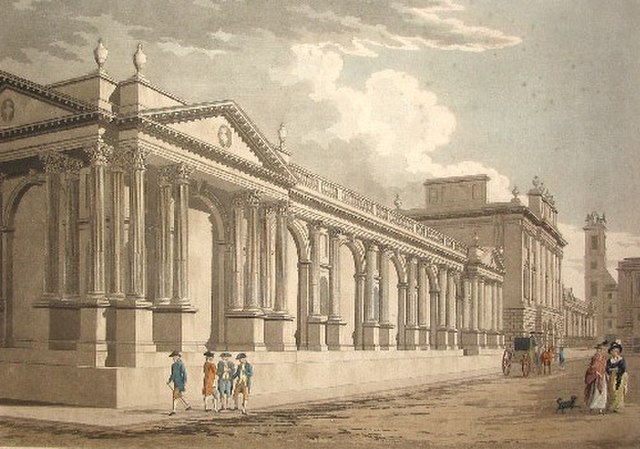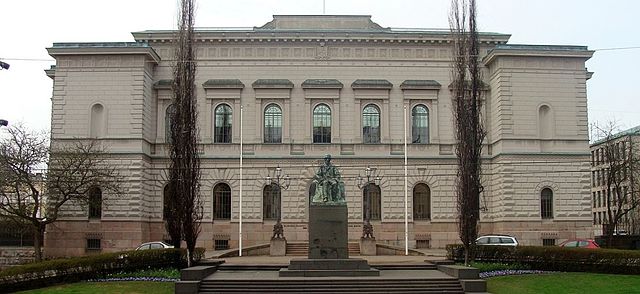The State Bank of Morocco was a quasi-central bank established in 1907 following the Algeciras Conference, to stabilize the Moroccan currency and serve as a vehicle for European and especially French influence in the Sultanate of Morocco. Following the independence of Morocco, it was replaced in 1959 by the newly created Banque du Maroc, known since 1987 as Bank Al-Maghrib.
Palais Zahia building in the medina of Tangier, the State Bank of Morocco's head office from 1907 to 1952
The State Bank's building in Rabat, inaugurated 1925 and the seat of its executive management until succession by Bank Al-Maghrib in 1959
Building at 3, rue Volney in Paris, the State Bank of Morocco's "seat of administration" where board meetings were held from 1907 to 1922
Moroccan and European negotiators at the Algeciras Conference, 1906
A central bank, reserve bank, national bank, or monetary authority is an institution that manages the currency and monetary policy of a country or monetary union. In contrast to a commercial bank, a central bank possesses a monopoly on increasing the monetary base. Many central banks also have supervisory or regulatory powers to ensure the stability of commercial banks in their jurisdiction, to prevent bank runs, and in some cases also to enforce policies on financial consumer protection and against bank fraud, money laundering, or terrorism financing.
Walter Bagehot, influential 19th-century theorist of the economic role of central banks
Interior of the Llotja de Barcelona where the city's Taula de canvi was operated
The Bank of England in 1791
The Bank of Finland in Helsinki








